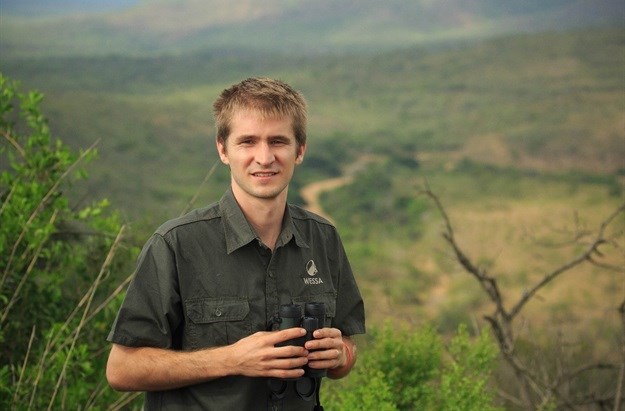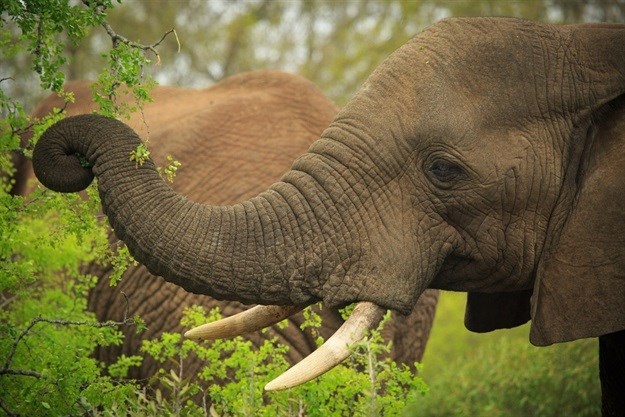The Wildlife and Environment Society of South Africa (WESSA) has launched an elephant monitoring project in the Hluhluwe-iMfolozi Park (HiP) in KwaZulu-Natal.
The project will provide essential data to support and strengthen Ezemvelo KZN Wildlife’s management of elephant populations in the park as well as enhance a broader understanding of how best to manage elephant populations in closed systems.

WESSA Elephant Monitoring Project Officer, Timothy Kuiper. Chris Galliers/WESSA©
Elephants are known as a keystone species because they have a disproportionate ability to alter their habitat and to dramatically affect other species in the ecosystems in which they live. Elephants require extensive ranges to maintain healthy populations and, as ecological engineers, they can be either a threat or an asset to biodiversity in a closed system.
The HiP is one example of a medium-sized (96,000ha) reserve with a growing elephant population, which is fast approaching the reserve’s ecological carrying capacity of around 1,000 individuals. Park management have been implementing a contraception programme where adult cows are darted from a helicopter with a contraceptive as part of an Elephant Management Plan to control numbers. If this method proves effective it will provide an attractive alternative to culling or translocation.
Key aim of plan
A key aim of the HiP Elephant Management Plan, drawn up by park ecologist Dr Dave Druce and others, is to maintain the elephant population in a state that does not jeopardise the conservation of biodiversity elements, priority biological assets or the maintenance of ecological processes within the park.
In support of the contraception programme, accurate on-the-ground tracking and data collection is essential to inform elephant conservation and broader management strategies in HiP. Although 18 of the park’s adult cow elephants are fitted with tracking collars, it has been more than two years since the last field monitor was employed and data was collected.

An African Elephant in Hluhluwe-iMfolozi Park. Chris Galliers/WESSA©
Chris Galliers from WESSA’s Biodiversity Programme has now facilitated a resumption of the monitoring work to redress the data gap and ensure close observation of the contraceptive programme. This builds on WESSA’s 2014 funding support for a full aerial count of the HiP elephant and rhino populations.
Monitor appointed
Some recently accessed funding has now allowed WESSA to appoint Timothy Kuiper as an elephant research monitor in HiP. Kuiper is working under Dr Druce where his monitoring activities include building up the individual elephant photograph database and field ID kits; collecting data on herd demographics and family structure; monitoring elephant movements from GPS collar data; and assisting on the ground with contraception operations.
The current project duration is for five months, but it is hoped that this work can be continued if additional funding is secured. The project is also collaborating with Dr Michelle Henley from Elephants Alive - a long-term WESSA partner and member of the Elephant Specialist Advisory Group - to draw on her expertise as well as to ensure that there is shared learning with her work on elephant populations in the Lowveld.

































